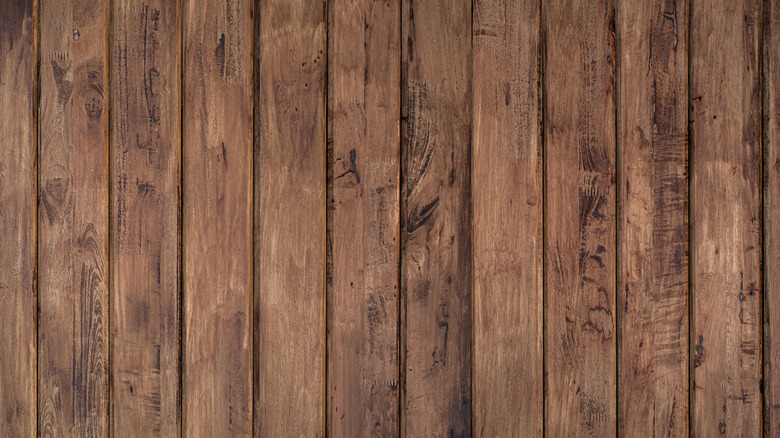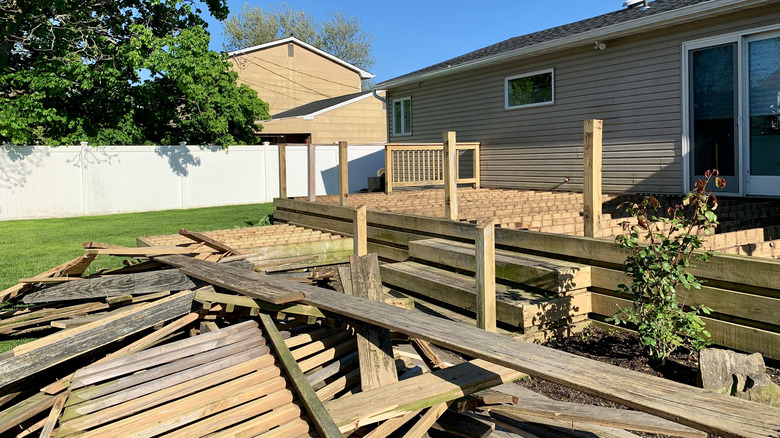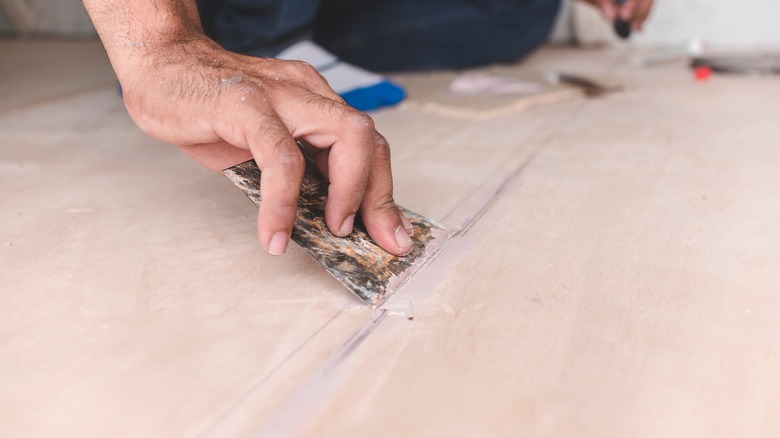Can You Repair An Old And Damaged Wooden Deck With Wood Filler?
We may receive a commission on purchases made from links.
Decking eventually gets old and starts to lose its shine and vigor. Wooden decks are built to last, but they require consistent maintenance and care to perform their duty for many years. Seal Smart reports that deck resealing should typically happen once yearly but once every three at an absolute minimum. It's also a good idea to consider coverage options like a patio roof or other permanent canopy to protect some or all of the deck's surface from the sun's rays.
But between resealing tasks — or perhaps during one — you may notice knotholes, rot, or other damage that have started to carve out a space in one or more of your deck's boards. This can happen to any deck, but it's most prevalent among older surfaces and those that don't receive the appropriate level of care. When moisture penetrates the board, the wood becomes susceptible to structural damage at a much greater decay rate. Fortunately, using wood filler is a simple way to repair many damaged sections of wooden decking that have been a little worse for wear in recent times.
Assess the damage that needs repair
The first step in any repair work is assessing the damage at hand. Inspecting your deck's boards will give you a good sense of the problem that needs resolving. Knotholes and wood rot can be salvaged with wood filler, but extreme warping, cracks that run the length of a board, or a broken piece of deck lumber are likely better resolved with a different approach. Decks.com notes that replacing a whole board in your deck is possible if the damage has become extensive and requires this more extreme measure.
Typically, deck boards will be secured with screws, so removing one is as simple as unscrewing it from the substructure. Then, you can replace the damaged lumber with a new piece. If you have substantial damage to contend with, it might be beneficial to consider tearing down most or even all of the construction and starting over. At the very least, you're likely to retain viable foundation posts that won't need to be repoured to build an entirely new decking surface. Assessing the damage can help you choose the right course of action for making critical repairs. Fortunately, if you're only looking at cosmetic, manageable, or contained damage to your boards, a wood filler can get the job done quickly and effectively.
Use wood filler on wood rot and knotholes
Wood rot is one of the most common issues that deck owners face. These small pockets of damaged wood create deformations in the board and can be identified based on their textbook sponginess when poking a section with a screwdriver, awl, or any other hard object. Wood rot is actually simple to repair with wood filler, according to Everyday Home Repair. You'll need just a few tools, including the wood filler, but the site also recommends Bondo because of its quick setting capability.
The first step is extraction. You'll need to use a knife, awl, or some other tool that gives you confidence in digging around in your wooden boards. Extracting the damaged wood material is crucial to ensuring a secure repair that won't need additional work later. Carefully cutting out all the rotted material until you can only feel solid wood in the cavity ensures that rot will not continue to grow in the space. Vacuuming out any debris that gets stuck is a good idea. Then, prepare the wood filler and use a putty knife to press it firmly into the affected areas. Give the filler time to harden, following the instructions on the container. Then sand down the excess filler material to bring the segment back into perfect unison with the rest of the board's length. You may tackle these issues before sealing to solidify the fix shortly after.


